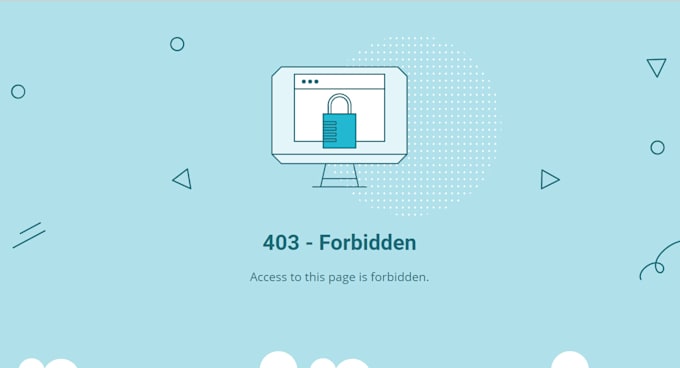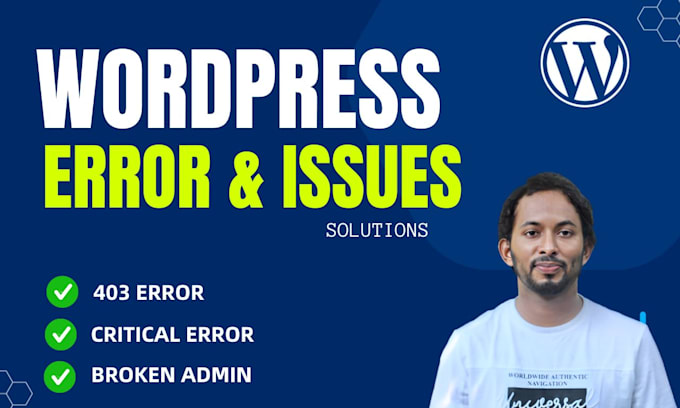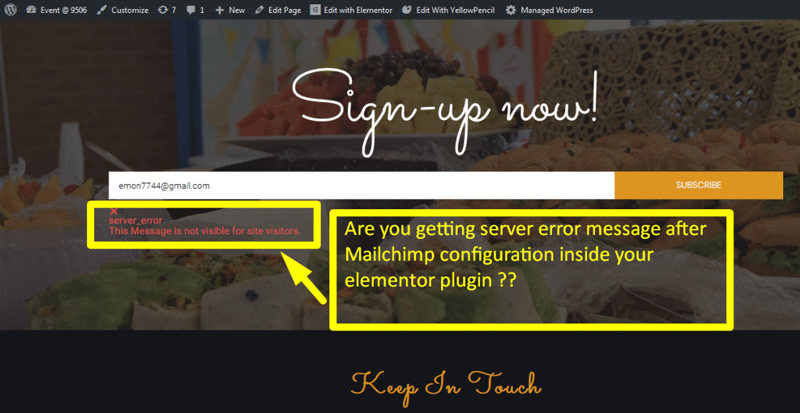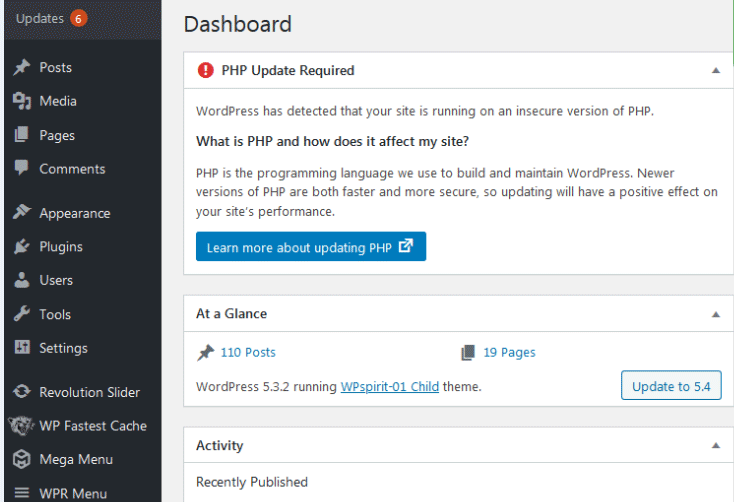403 error in WordPress often indicates malware on your site. This can block access to pages and resources.
Malware can infiltrate your WordPress site through outdated plugins, themes, or weak passwords. Hackers exploit these vulnerabilities to gain unauthorized access. Detecting and removing malware is crucial to restore your site’s functionality and security. Regular updates, robust security plugins, and strong passwords help prevent such issues.
Always back up your site before making any changes or updates. Consider using security tools to scan and clean your website. Keeping your WordPress installation secure ensures a smooth user experience and maintains your site’s credibility. Protect your site to avoid 403 errors and potential data breaches.

Credit: www.fiverr.com
Identifying Malware
Strange pop-ups can be a sign of malware. Your website might start running very slow. Files may appear that you never added. Users might report getting redirected to unknown sites. Admin login might become inaccessible. These are all signs that you need to act quickly.
Use security plugins to scan your site. Some popular tools are Wordfence and Sucuri. Install the plugin and run a full scan. Look for any files that seem suspicious. Always update your plugins to keep your site secure.

Credit: kwork.com
Backup Your Site
Protect your site by backing it up regularly to avoid 403 errors caused by WordPress malware. Ensure your data remains secure and recoverable.
Why Backup Matters
Backups protect your site from data loss. If malware attacks, you can restore your site. Without a backup, recovery is hard. Backups save time and stress. They are an essential part of security.
Backup Methods
There are different ways to back up your site. Some popular methods include:
- Using a plugin like UpdraftPlus or BackupBuddy.
- Manual backups through cPanel.
- Storing backups in cloud services like Google Drive or Dropbox.
Each method has its pros and cons. Choose the one that fits your needs. Regular backups ensure your site stays safe.
Removing Malware
Encountering a 403 error on WordPress often signals malware infection. Swiftly remove malware to restore your site’s functionality and security.
Manual Cleanup
Scan your files for any suspicious code. Delete all unknown files and folders. Open your theme files and look for strange PHP code. Remove any code that looks out of place. Check your .htaccess file for unauthorized changes. Restore the original version if needed. Update all your themes and plugins. Make sure they are from trusted sources. Change your admin passwords and use a strong password. This prevents hackers from getting back in.
Using Plugins
Install a security plugin like Wordfence or Sucuri. These plugins scan your site for malware. They can also fix vulnerabilities. Set up regular scans to keep your site safe. Use a backup plugin to create regular backups. This helps you restore your site if it gets infected again. Always update your plugins to the latest versions.
Fixing 403 Error
Wrong file permissions often cause the 403 error. Ensure all files have the correct permissions. Set files to 644 and directories to 755. This can be done using an FTP client. Check the wp-content folder and its subfolders. Incorrect settings here often lead to errors.
The .htaccess file can also cause 403 errors. Rename the current .htaccess file to .htaccess_old. This will disable it temporarily. Then, go to your WordPress dashboard. Navigate to Settings > Permalinks. Click the save button without making changes. This will create a new .htaccess file.
Enhancing Security
Use a strong password for your WordPress site. A strong password has uppercase, lowercase, numbers, and symbols. Do not use common words or easy-to-guess phrases. Change your password every few months.
Enable Two-Factor Authentication (2FA) for extra security. 2FA requires a second step to log in. This step can be a code sent to your phone. Even if someone steals your password, they can’t log in without the second step.
Ongoing Monitoring
Regularly scanning your WordPress site is crucial. Malware can hide in many places. A good security plugin helps detect these threats. Set up automated scans to run daily or weekly. This ensures your site stays protected.
Conducting regular security audits is essential. These audits find vulnerabilities that scans might miss. Hire a professional if you lack expertise. They can thoroughly inspect your site. Fix any issues they find immediately. This keeps your site safe from threats.
Final Thoughts
Regularly update your WordPress themes and plugins. This keeps your site safe. Use strong and unique passwords. Enable two-factor authentication for extra security. Install a reliable security plugin. This helps monitor suspicious activities. Always keep backups of your site. This helps in quick recovery. Avoid using nulled themes and plugins. They often contain malware.
Visit the WordPress support forums. They offer helpful advice. Use trusted security blogs for updates. Consider joining WordPress security communities. They share latest threats and solutions. Look into online courses on WordPress security. They help you stay informed. Bookmark reputable websites for security tools. These tools can protect your site. Finally, consult with WordPress experts if needed.

Credit: www.fiverr.com
Frequently Asked Questions
How Do I Fix A 403 Forbidden Error In WordPress?
Check file permissions, disable plugins, reset. htaccess file, clear browser cache, and contact your hosting provider.
Is Error 403 A Virus?
Error 403 is not a virus. It indicates forbidden access to a webpage. This error means you don’t have permission.
Why Do I Get A 403 Error When Accessing A Website?
A 403 error occurs due to insufficient permissions. You might be blocked by the website or lack access rights.
How Do I Fix Http 403 Forbidden Error?
To fix HTTP 403 forbidden error, check file permissions, clear browser cache, disable extensions, update firewall settings, and contact your hosting provider.
Conclusion
Protecting your WordPress site from malware is crucial. Regular scans and updates help prevent 403 errors. Use trusted security plugins to safeguard your website. Always back up your data to avoid potential losses. Stay vigilant, and your site will remain secure and functional.


